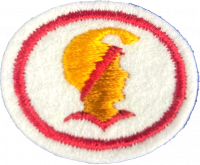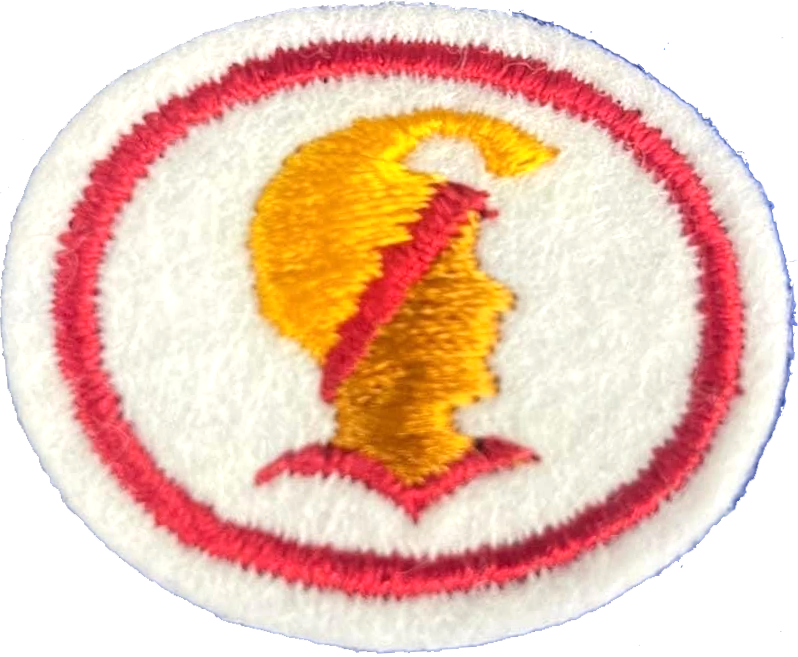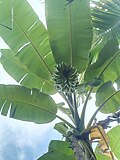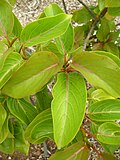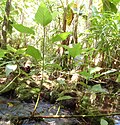AY Honor Hawaiian Lore Answer Key
1
Here is a list of the islands of Hawaii.
| 1. Hawaiʻi | 5. Molokaʻi |
| 2. Maui | 6. Lānaʻi |
| 3. Oʻahu | 7. Niʻihau |
| 4. Kauaʻi | 8. Kahoʻolawe |
2
3
The Hawaiian Islands are part of an archipelago in the North Pacific Ocean which extends for about 2000 miles from the big island Hawaii to Ocean Island on the northwest. (Latitude 18° 55' north, Longitude 154° 40' and 162° west.)
4
| Ocean Island | Maro Reef |
| Necker Island | Laysan Island |
| Midway Island | Lisianski Island |
| French Frigate Shoals | Pearl and Hermes Reef |
| Gardner Island | Molokaʻi |
| Dowsett Reef | Ford Island |
5
The Hawaiian islands are mostly volcanic with some coral. They really are tops of high mountains.
6
a. Māui was a demigod, a super man. Māui fished them from the ocean.
b. According to tradition, a large bird was seen wheeling and dipping over the ocean and suddently it dropped an egg, a very large egg, which burst into several fragments. These fragments formed the Hawaiian archipelago in the middle of the Pacific. The islands stretched from the northwest to the southeast, the eight islands the largest of them all.
c. The old Hawaiians believed that Kū, Kāne and Lono created the world and its people. Kāne took a large calabash cover and threw it into space to form the sky. He places his hand in the calabash and brought out a flaky white substance, threw it into the air and it became the clouds. He again placed his hand into the calabash and drew out a handful of seeds. These he threw into space and formed the stars, sun and moon. Then, once more he placed his hand in the calabash and folding his fingers formed valleys and lowlands. After the earth was created and springs of water had come into existence, Lono planted all things which made the earth beautiful. Kū was to create man.
7
Most of the year, the trade winds blow and the cool currents in the ocean around the islands keep the temperature lower than that of any other part of the world in the same latitude. The islands don't have bad storms like other parts of the world and the climate is warm and comfortable. The windward side usually is the rainy side, and the leeward side dry, except when the Kona winds blow from the south. There is snow during winter on the highest mountains; Mauna Kea and Mauna Loa on Hawaii, Haleakalā on Maui.
8
The soils are volcanic, sandy and hard clay. Volcanic soils are rich and plants grow easily. Sandy soils and cinders help to make hard soils soft for plants to grow well. Clay soil is good for taro.
9
9a
9b
For food:
For cord and house needs:
10
10a
10b
11
12
13
14
14a
14b
14c
14d
14e
14f
14g
14g
15
16
17
18
19
20
21
22
23
24
25
26
27
28
29
30
31
32
Oahu
Hawaii
| 1. Kilauea | 4. Honaunau |
| 2. Akaka Falls | 5. Parker's Ranch |
| 3. Waipio Valley | 6. Museum at Kona or Hulihee Palace |
Maui
| 1. Haleakalā | 4. Kauiki Hill |
| 2. Iao Valley | 5. Waianapanapa |
| 3. Lahaina Luna High | 6. Keanae Valley |
Kauai
| 1. Waimea Canyon | 7. Kuhio Park and Memorial |
| 2. Kokee | 8. Barking Sands |
| 3. Wailua River | 9. Kalalau Valley |
| 4. Fern Grotto | 10. Hanalei |
| 5. Menehune Ditch | 11. Haena Caves |
| 6. Wailua Falls |
LEGENDS
Maui and the Sun
Maui lived wit his mother, Hina, at Makalia on the west side of Maui, near the end of Mauna Kahalawai, the meeting place between heaven and earth. He lived there with his brothers. It was where the mountain thrust itself into the sea and one was able to see Haleakala on the east side of Maui as he looked across the water. Haeakala, House of the Sun, was believed to be the abode of the sun at night.
Now, Maui and his brothers had never taken notice of the sun's travels across the sky for they were usually busy going about their own activities, fishing and swimming. Each morning saw them ready to go out in their canoe with their nets and lines, thinking only of the fish they would carch and of the fun they would have swimming. But their mother, Hina, was kept busy for she had to provide enough kapa for the family and kapa making was not really fun. She was having trouble getting her kapa dry before dark.
One morning, very early, Hina went to her mulberry (wauke) grove at Kahakuloa. There she stripped off the bark of the trees, rolled the strips and soaked them in calabashes filled with sea water to soak for a few days. After the soaking, she was going to stretch them over flat logs and scrape the bark off with a large shell. The strips would then be ready for beating.
Mother Hina had a house for kapa beating. Here she would sit before it and chant tot he goddess of kapa while she would bea tthe wauke strips with a kapa beater made of hardwood, usually kauila. Mother Hina always changted to the goddess of kapa because she and all of the Hawaiians believed that the goddess had changed herself into a wauke tree to help her people have clothing.
The wauke strips were narrow, so to make a wide piece, on had to joine several strips together by beating along the edges. The final beating was done with a carved beater to decorate the kapa before being painted or stamped with native vegetable or mineral dyes. This work took all day or longer, and then the kapa was laid out to dry. So the sun was very necessary. So often it set before the kapa was dry enough to put away.
Well, Maui decided to help his mother. He arose early one morning after planning the night before just what he would do. As soon as the sun rose, he counted its number of rays or legs. It was difficult to get the correct count becuase the sun was so bright, but he was sure he had the correct number--fifteen. Then he went to the valley of Waihe'e where there was a large coconut grove. Here, he made fifteen coconut sennit cords and then returned to his home to tell his mother of his plan.
When he reached home, he tolder her that he was going to Haleakala before the sun rose, and he would snare the sun's legs so it would not be able to move. Then, he was going to demand that the sun be more considerate of her need of his help. He must agree to go slower or he, Maui, would break off his legs. He had fifteen strong coconut sennit cords to help him carry out his plan. But his mother said, "The sun has sixteen legs. You are short one cord." Then, she thought for a while and said, "Never mind. I know what you can do. Go to your grandmother who lives near Haleakala. You will find her sitting under a mulberry (wauke) tree. She will help you. Go now. My prater will be with you."
So, Maui followed his mother's advice. Very early it was when he reached his grandmother's home, and sure enough, he found her sitting under the wauke tree, stringing an ilima lei and chanting. So, she did not seem to hear him as he greeted her with a cheerful "Aloha! Aloha, gramda. I need your help."
She kept right on chanting until she finished stringing her lei. Then she said, "Ah! Aloha, my grandson. Yes, I can help you. Tell me what you wante me to do."
"Oh," said Maui, "I need an extra cord of coconut sennit. You see, I am going to snare the sun's legs as he comes out of Haleakala and tie them tightly to a tree or rock. Then, I am going to demand that he travel slower to give my mother and all other mothers time to dry their kapa. If he doesn't agree, I am going to break off his legs."
"That is a good plan, my grandson," said Maui's grandmother. "Now go into the house and look in the koko hanging near the door. You will find a cord in it made of cocony sennit. It is almost new and is very strong. You will then have sixteen cords, just enough for what you need."
When Maui returned with the cord, his grandmother had a stond adz for him to use if the sun proved hard to convince that he should go slower. She told him that the stone adz had magic powers.
Then, looking towards Kaleakala, she said, "Grandson, it is too late to snare the sun now. Look! The sun has risen. It is day, so why not wait until tomorrow morning? Get all of your things together, hav ea good rest, and then eat a good supper and sleep." Then she began to chant again.
That night, Maui slept in kapa blankets becuase it was very cold. Very early the next morning, Maui left to meet the sun. He went up to Haleakala and hid among the crags on the side he was sure the sun would appear. Ah! Yes! It was beginning to get bright now. Soon, the sun's legs would appear. Sure enough! There was the first leg. Quickly, Maui snared it. Then the second leg appeared and he snared that one, and so on until he had all sixteen snared and tied to a wiliwili tree, whcih happened to be growing near his grandmother's.
Suddenly, the sun was up and fully awake! "What's the matter? What has heppend to my legs?" he wondered. And then he caught sight of Maui down below--small, insignificant, but strong. So he called out, "What have you done to my legs? Let me go on my way. It is getting late."
Maui made sure that all cords were securely tied and that he himself was firmly set on the large rock he was standing on before he ventured to make his bargain with the sun. He knew that the sun could really lget very hot as the day wore on and he wanted to be sure he would not get scorched.
Quickly, Maui came to the point. He said, "Yes. I know tha tyou want to hurry off on yoru journey across the sky so you could return here to sleep. That is why I have snared you. I want to make a bargain with you. You see, you have been going around too fast and my poor mother's kapa has not had enough time to get dry before dark. Could you go a little slower, please?"
"Oh," said the sun. "I can't do that. I ahve to go fast. I want to get back here to sleep. I get tired doing the same thing every day. Oh, no" I can't go slower!" And then he tried to pull away so he could begin his day's travel.
But Maui jerked some of the cords and said, "I'll hjave to break off some of your legs then." And again he jerked the cords.
"Stop!" cried the sun. "That hurts. Don't break my legs, please! I need all of them."
"Well, hurry up and be agreeable and I'll let you go. Just promise to go a little slower," called out Maui. "Have a little pity."
"Let me see," said the sun. "How about going fast some months of th eyar and slower the other months? Yes! The more I think of this plan the better I like it. Besides, I don't want my legs broken, and I do feel sorry for your mother and all the others who beat the kapa for their families. Yes! I'll go slower this time of the year and then I'll go gast the other half. How, may I go on my way? I'll keep my part of the bargain."
"Thank you very much," called Maui. He was very happy as he untied the sun's legs and freed him for his journey across the sky. The sun stretched all of his sixteen legs, smiled, and away he went. Maui noticed as he watched that the sun was not traveling as fast as he used to travel. He was keeping his promise.
And so did the sun keep his promise, making Maui's family and all of his people happy for one half year of long sunny days, days in which they could make the kapa they needed and then enjoy one half year of early bedtime.
